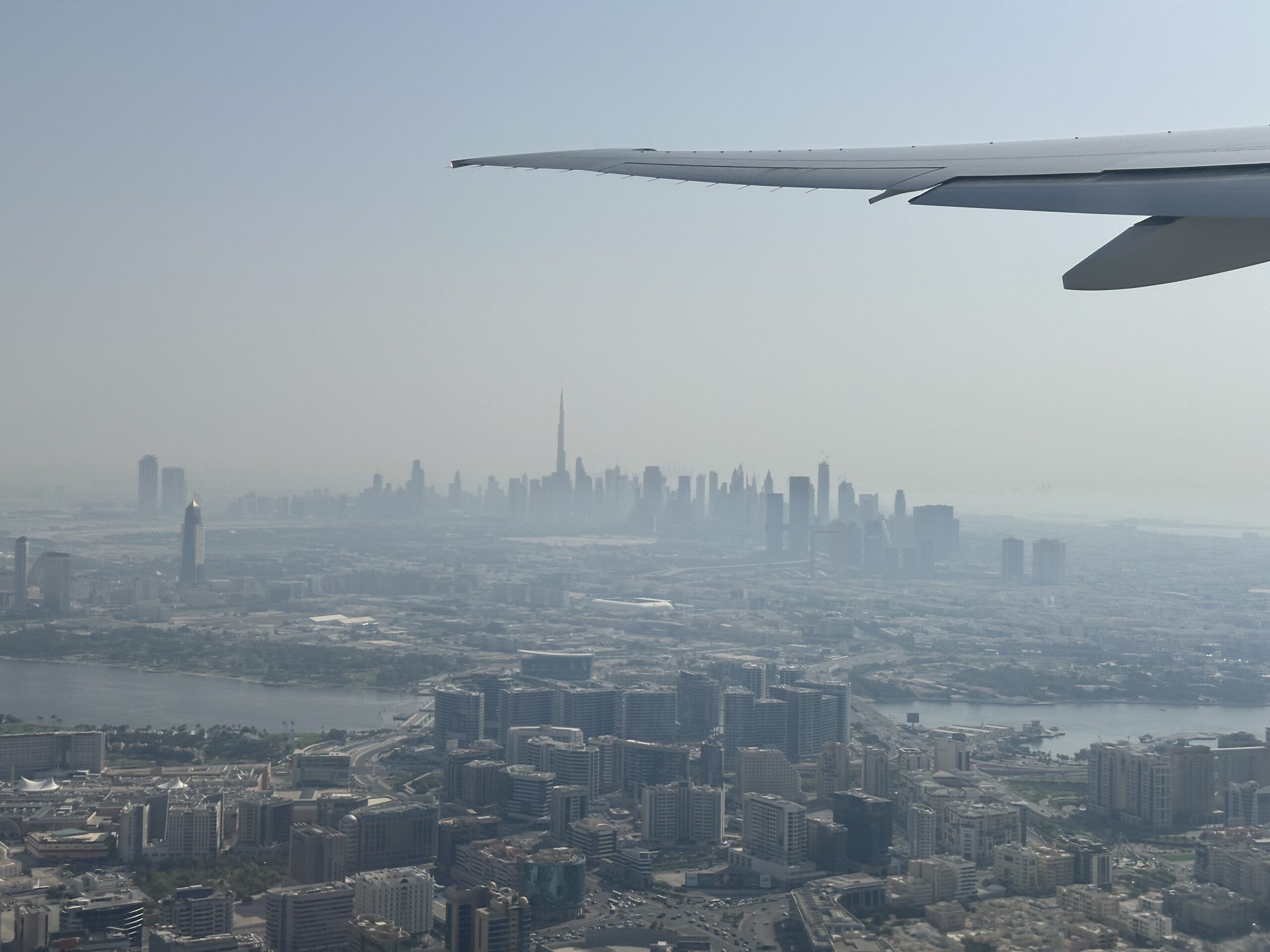It was an exciting month for the 3DGeo research group in April. Three major conferences took place:
- The Joint International Symposium on Deformation Monitoring (JISDM) in Karlsruhe (7-9 April)
- The ISPRS Geospatial Week (GSW) in Dubai (6-11 April)
- The EGU General Assembly in Vienna (27 April – 2 May)
Let’s give you some impressions below!
JISDM
The Joint International Symposium on Deformation Monitoring (JISDM) brings together experts on deformation monitoring from a range of fields such as photogrammetry, remote sensing and of course geodesy. It is a very focused conference, allowing for close exchange with experts working on related topics. It takes place every three years, this time it was held in Karlsruhe, Germany.
Our PhD student Ronald Tabernig presented his recent work with the title:
Tabernig, R., Albert, W., Weiser, H. & Höfle, B. (2025): A hierarchical approach for near real-time 3D surface change analysis of permanent laser scanning point clouds. In: 6th Joint International Symposium on Deformation Monitoring (JISDM). Vol. 6, pp. 1-9. https://doi.org/10.5445/IR/1000180377.
The study is accompanied by an open-source Python library for voxel-based point cloud operations. Check it out! https://github.com/3dgeo-heidelberg/vapc
Ronald’s conference paper is part of the AIMon5.0 project which was also presented at the JISDM by project coordinator Daniel Czerwonka-Schröder:
Czerwonka-Schröder, D., Schulte, F., Albert, W., Hosseini, K., Tabernig, R., Yang, Y., Höfle, B., Holst, C. & Zimmermann, K. (2025): AIMon5.0 – Real-time monitoring of gravitational mass movements for critical infrastructure risk management with AI-assisted 3D metrology. In: 6th Joint International Symposium on Deformation Monitoring 2025. Vol. JISDM 2025, pp. 1-9. https://doi.org/10.5445/IR/1000179762.
Prof. Bernhard Höfle, head of the 3DGeo research group, was chair of two sessions on Tuesday:
- Geomonitoring with TLS
- Advanced point cloud analysis strategies for deformation analysis

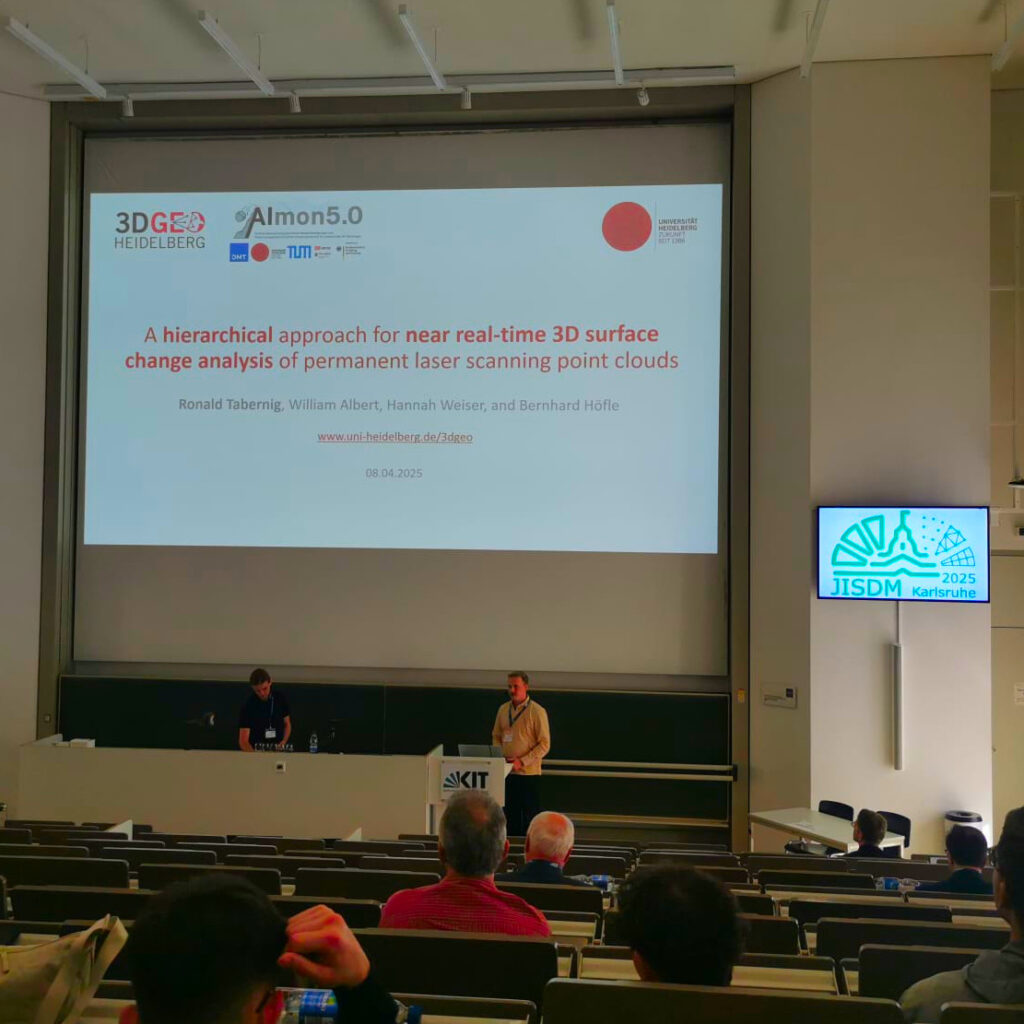
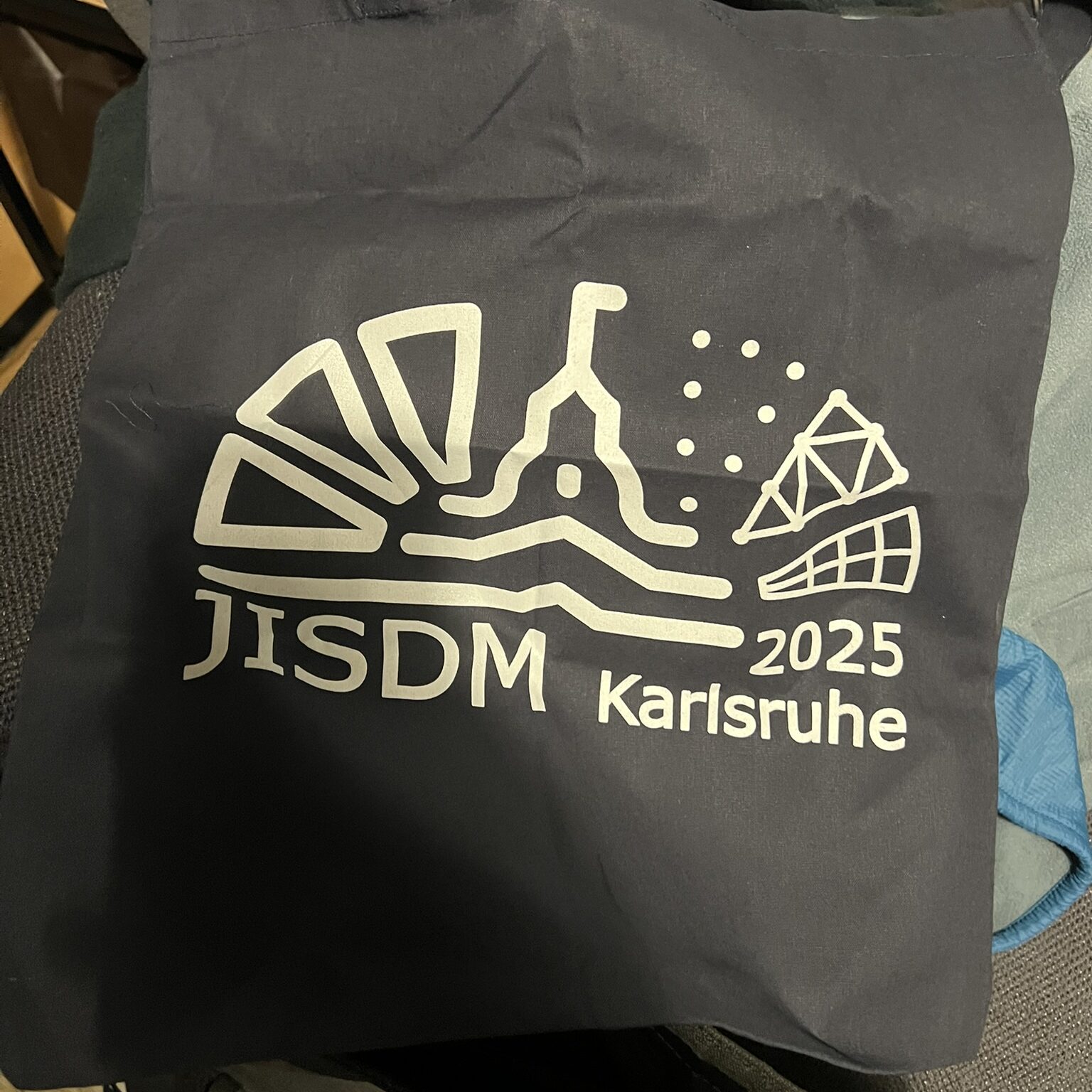
GSW
The ISPRS Geospatial Week (GSW) runs under the theme of “Photogrammetry and Remote Sensing for a Better Tomorrow” and consists of workshops organized by the various ISPRS Working Groups. It is held biennially in odd years. In 2025, it took place in Dubai, AE.
From the 3DGeo research group, Jannik Meyer (Bachelor student and research assistant) and William Albert (PhD student) joined the conference. Their full conference papers have been accepted for the ISPRS Annals of the Photogrammetry, Remote Sensing and Spatial Information Sciences and will soon be published.
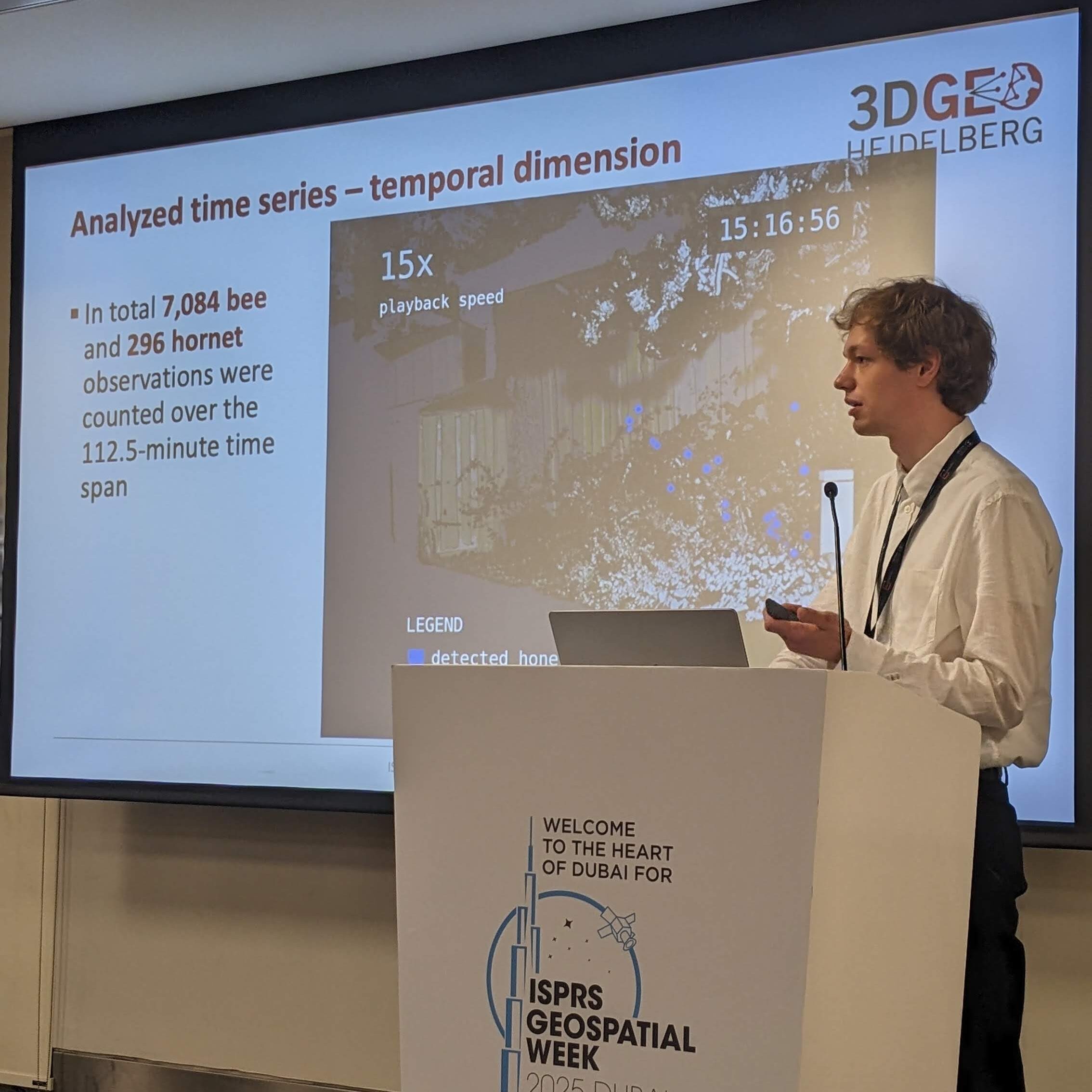
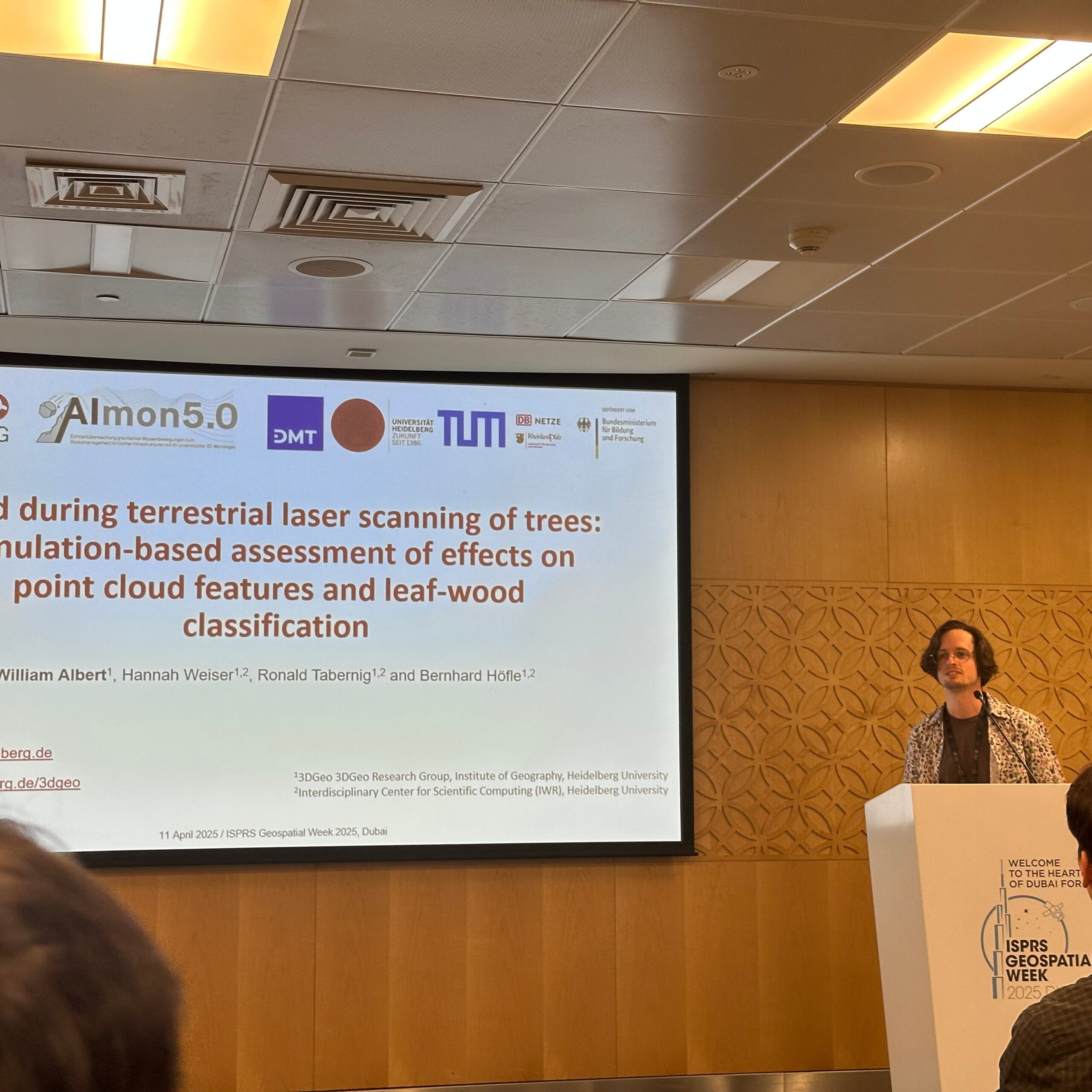
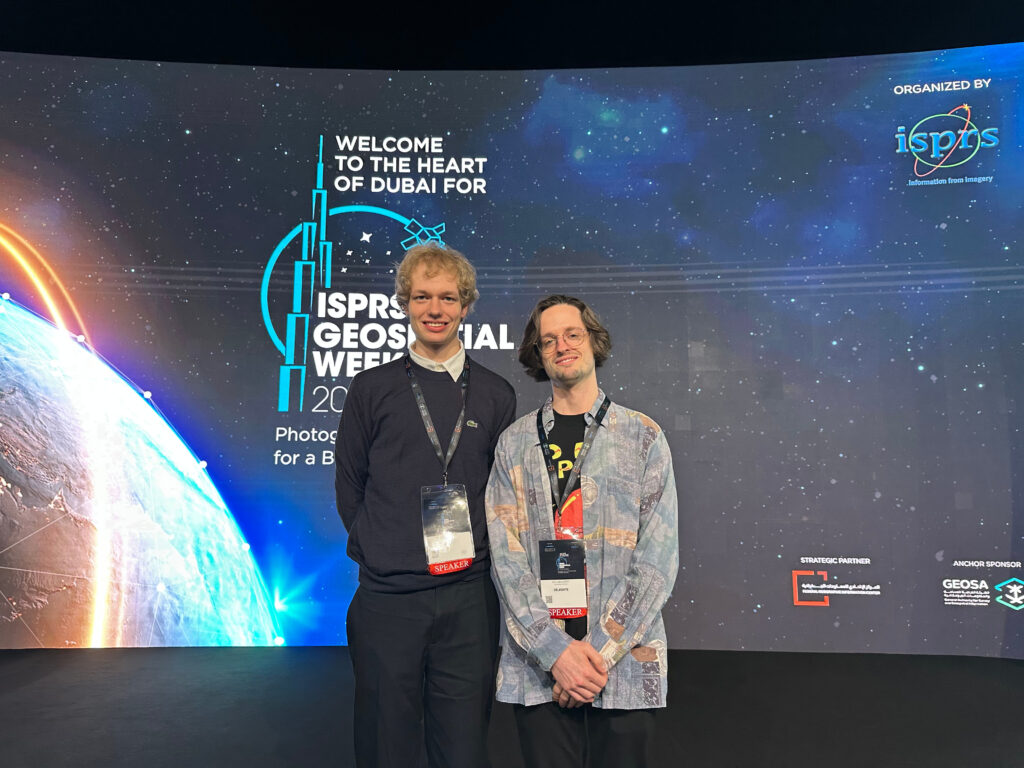
EGU General Assembly
The General Assembly of the European Geosciences Union (EGU) is the largest geosciences conference in Europe and takes place every year in Vienna, AT.
At EGU25, Niklas Carniel presented the results of his successful Bachelor thesis in an oral talk:
Carniel, N., Tabernig, R., Hartl, L. & Höfle, B. (2025): Deriving activity zones of the Äußeres Hochebenkar rock glacier through boulder tracking in multitemporal UAV-LiDAR point clouds. In: EGU General Assembly 2025. Vol. EGU25, pp. 1-2. https://doi.org/10.5194/egusphere-egu25-5020.
PhD student Hannah Weiser introduced a novel concept with a poster:
Weiser, H., Albert, W., Tabernig, R. & Höfle, B. (2025): Virtual Laser Scanning of Dynamic Scenes (VLS-4D): A Novel Opportunity for Advancing 3D Forest Monitoring. In: EGU General Assembly 2025. Vol. EGU25, pp. 1-2. https://doi.org/10.5194/egusphere-egu25-1560.
The poster is accompanied by a project website with reproducible Jupyter Notebooks. Check it out! https://3dgeo-heidelberg.github.io/vls-4d/
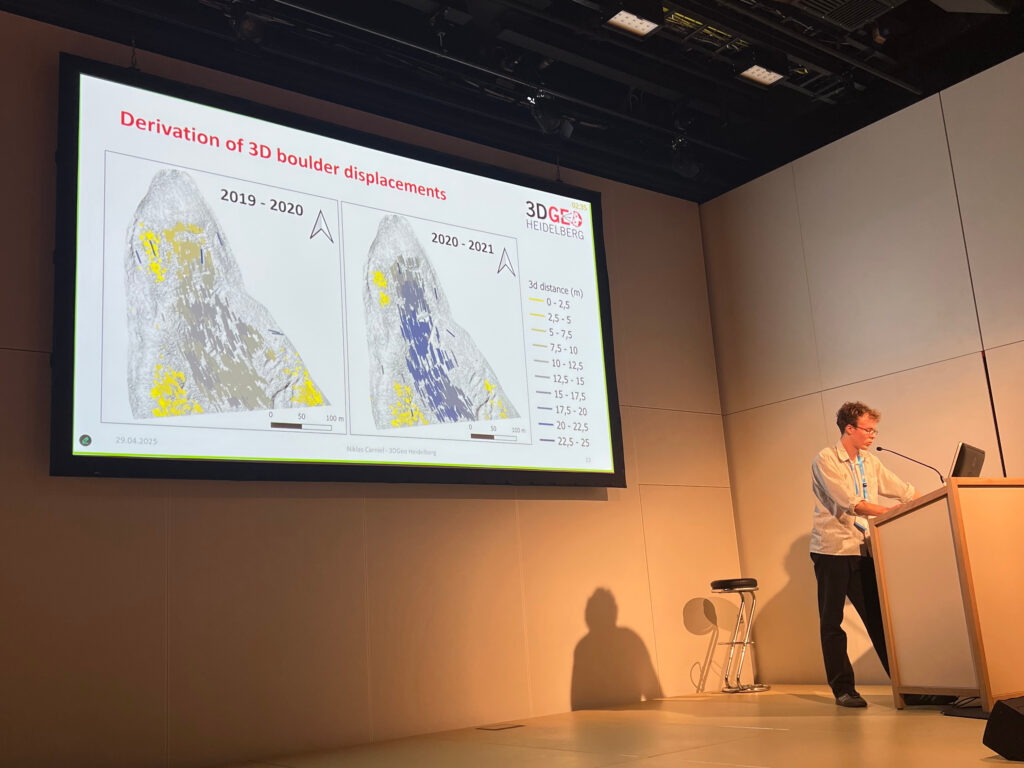
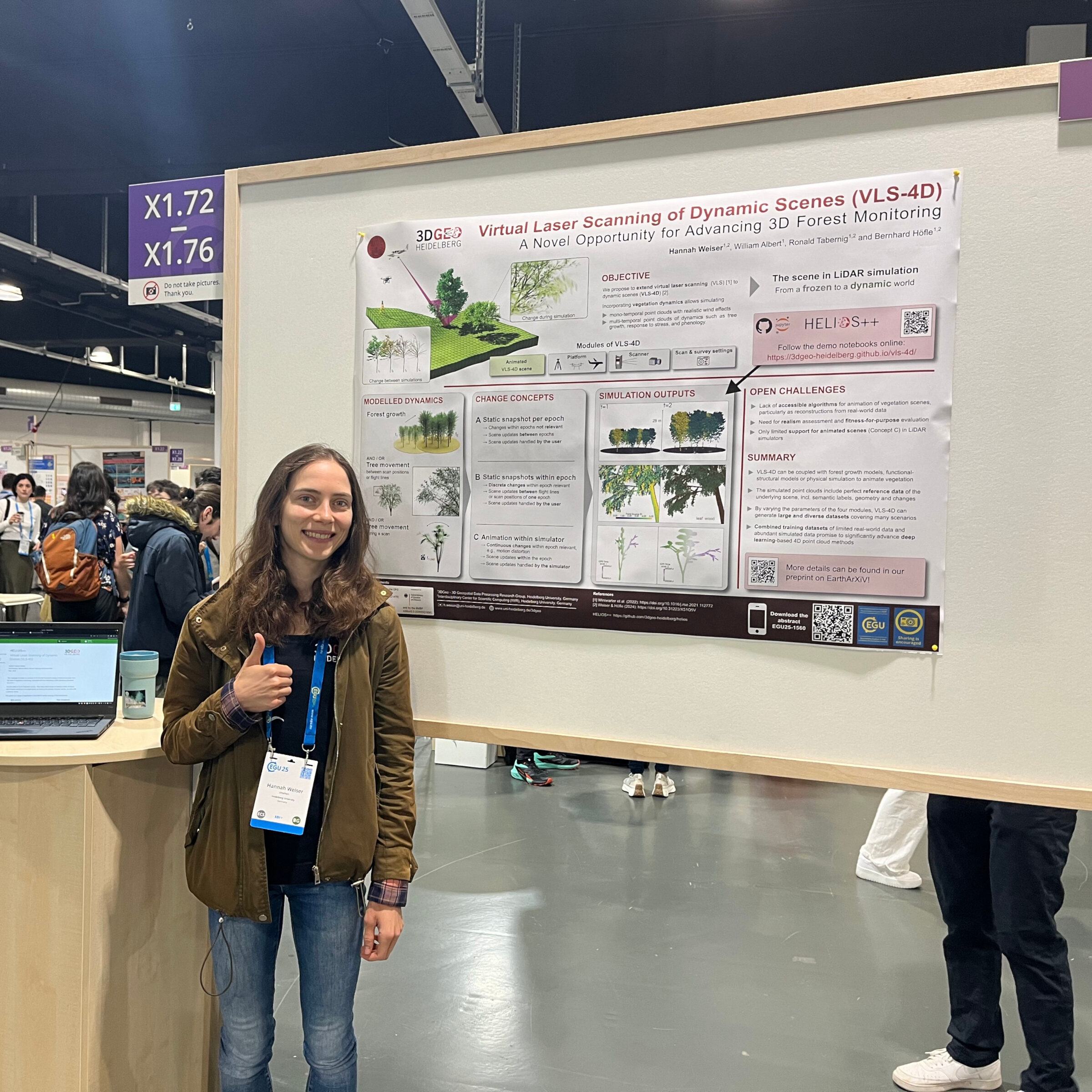

Niklas and Hannah have shared their experience in a short video. Check it out!



